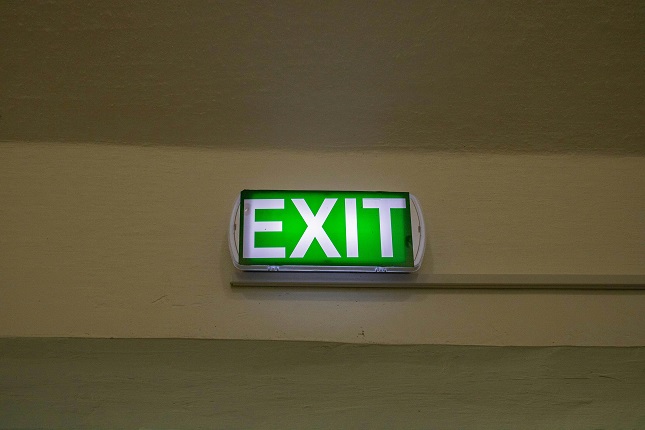When people think of fire safety, they usually picture flames, alarms, and running to the nearest exit. But what really causes the most trouble in a fire isn’t always the fire itself—it’s the smoke. Thick, hot smoke can fill up a room super fast, making it hard to breathe or see. That’s why buildings need something called roof smoke vents to give the smoke a place to escape. Without them, things can get bad really quickly.
Smoke Doesn’t Just Float Away
Smoke rises. Everyone knows that. But what people don’t always realize is that once smoke hits the ceiling, it doesn’t just disappear. It gathers. And if there’s nowhere for it to go, it spreads. It’ll fill every little space above your head until there’s no clean air left. In buildings with multiple floors, smoke can travel fast through stairwells and vents, getting ahead of the fire and trapping people who are trying to get out.
Now imagine trying to find an exit in that. The air is thick, your eyes burn, and you can’t see anything in front of you. It’s terrifying—and dangerous. That’s why buildings need smart systems that move smoke out of the way before it builds up too much.
The Role of Roof Smoke Vents
Roof smoke vents are panels or covers built into the top of a building. They open automatically when there’s a fire. The idea is simple: give the smoke a way to escape upward and outside, instead of letting it stay stuck inside where people are trying to get out. Some vents pop open right when the temperature hits a certain level. Others are connected to fire alarm systems and open when the alarm goes off.
If the building is really tall or has a big open space like a warehouse or shopping mall, these vents make a huge difference. They stop smoke from hanging around too long and make it easier for firefighters to see what’s going on when they arrive.
In places where safety rules are strict—like schools, airports, and big office buildings—these vents are required by law. And even in buildings where they’re not required, adding them can be a smart move. There are systems like roof smoke vents that are built just for this job, and they’re designed to work fast without getting in the way of other parts of the roof.
Smoke is More Dangerous Than Fire
This might sound weird at first, but it’s true: in most fires, more people are hurt by smoke than by flames. Why? Because smoke can sneak through walls and ceilings before the fire ever reaches that area. It moves faster and spreads farther. The heat from the smoke alone can burn your lungs if you breathe it in. It also carries harmful gases that can knock people out before they even realize what’s happening.
That’s why it’s not enough to just have sprinklers or fire alarms. Buildings need a way to control smoke so that people have time to leave safely.
Helping Firefighters Do Their Job
Another reason for smoke vents is to make it safer for the people running toward the fire—firefighters. When smoke is trapped inside a building, it’s way harder for firefighters to see where the fire is coming from or how bad it is. If roof vents are already pulling the smoke up and out, it clears the air just enough for them to move in and start fighting the flames.
This also means they don’t have to break windows or punch holes in the ceiling just to let the smoke out. That saves time, and when you’re in a fire, every second matters.
Not All Smoke Vents Look the Same
Smoke vents don’t all look like big boxes sitting on the roof. Some are low-profile and designed to blend in. Others are combined with things like skylights, so they let in light when everything’s normal but open wide during a fire.
There are even electric versions that can be controlled by a switch if someone needs to open them manually. But the best systems are automatic—no waiting, no thinking. Just fast action when the building needs it.
Smoke Control Is Part of the Big Picture
If you think about how a modern building works, it’s kind of like a machine. Every piece plays a role. You’ve got fire alarms, sprinklers, exit signs, emergency lights, and sometimes stair pressurization systems (those help keep smoke out of stairwells). Roof smoke vents are one part of that machine—but an important one.
All these systems work together to do one thing: give people more time and better chances to get out safely.
What You Might Not Notice
The funny thing is, if a building is designed really well, you won’t even see half of the safety stuff. You walk through it like normal, never thinking about what might happen in an emergency. And that’s kind of the point. You’re not supposed to notice it every day. But it should be there, ready to kick in if anything goes wrong.
Architects and building engineers have to think ahead. Where will the smoke go? How will people get out? What will the roof do when the fire starts? It’s a lot of planning behind the scenes.
Final Thoughts
Smoke doesn’t just make things hard to see—it’s one of the most dangerous parts of any fire. That’s why it needs its own exit plan. Roof smoke vents might not be something you ever notice on top of a building, but they’re doing one of the most important jobs out there: helping people get out alive.
Whether it’s a school, a shopping center, or a giant warehouse, having smart systems that move smoke out fast can make all the difference. So next time you look at a building’s roof and see something that looks like a weird panel or skylight—there’s a chance that’s actually a smoke vent, waiting quietly until it’s needed.






































